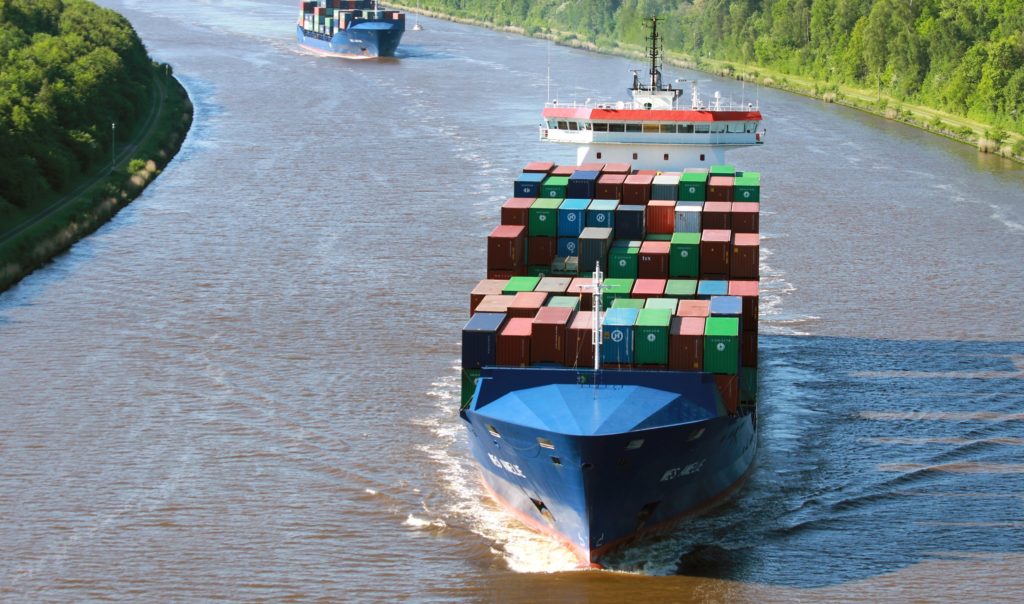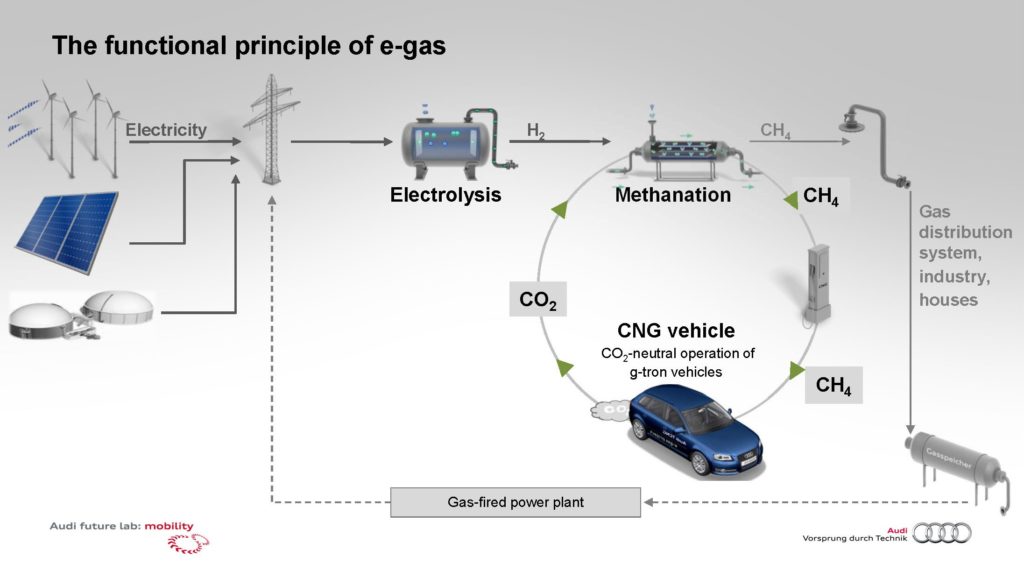Baltic Sea feeder vessel to make trial run on a mix of synthetic gas and LNG in early 2020
The potential for synthetic fuels to be used in large deep-sea vessels takes another step forward as engine-maker MAN Energy and German shipowner/manager Wessels Redeerei announce they will run an LNG powered feeder container vessel on a mix of LNG and synthetic gas,
The trial will see the feeder vessel Wes Amelie, which has a four-stroke dual fuel engine, take a partial supply of SNG to replace some of the vessel’s LNG, about 20 tons of 120 tons, during a voyage in the early spring 2020.
MAN Energy says the SNG will be manufactured at a prototype power-to-gas facility in Wertle, Germany, where a liquefaction plant is currently being built to turn the gas into a liquid for transportation and storage. The plant is owned by Audi, which like MAN is part of the VW Group.
The electrical power to manufacture the SNG and the power to convert it to liquified-SNG will come from renewable sources, namely wind turbines in the surrounding area.
Wes Amelie is a 1,036 teu feeder vessel that had its eight-cylinder, four stroke (8L 48/60 B) engine converted two years ago to a slightly larger eight-cylinder dual fuelled engine (51/60 DF). The vessel spends most of its operating life in the North European emission control area where vessel’s need to be run with a fuel that has a sulphur limit of 0.1%.
The 20 tons of liquified SNG will be delivered to the vessel and mixed in the vessels single 500 m3 pressurised LNG fuel tank.
The planned trial voyage using liquified SNG mixed with the vessel’s normal LNG supply is as much a showcase for MAN Energy as a demonstration of the use of the fuel, says Dr Ing Thomas Spindler, head of four-stroke upgrades at MAN Energy Solutions.
The company is pushing a new strategy of energy transition and is keen to both showcase synthetic fuels, as well as showcase its shore-based competence in building technology where renewable electricity can be used to make synthetic fuel such as SNG, ammonia or hydrogen.

SNG is made by electrolysis of water to create hydrogen and oxygen, with the hydrogen then reacted with CO2 to create synthetic methane gas, CH4, a process known as methanation. The liquefaction of the methane creates liquid SNG which can be mixed with normal LNG.
The Werlte PTG plant is currently a small facility that started production in 2013 as Audi developed it CNG powered drives. Production is small and a liquefaction plant is currently being built to convert the synthetic gas into synthetic LNG.
Spindler confirmed that the intention is to increase production capacity of the Werlte P2G plant, partly to encourage shipping to take a more positive view of synthetic fuels.

The benefits of synthetic natural gas
MAN Energy Solution is keen to play up the carbon neutral characteristics of SNG when one looks at its total production, supply and combustion chain, as the creation of the synthetic gas requires a CO2 supply, which can be from CCS or from biogas processes.
For this initial trial with Wes Amelie the facility will need to produce 20 tonnes of liquified SNG which will be delivered to the vessel when it is in port in Europe. The vessel normally takes 120 tons of LNG, so the trial voyage will see it run on a 20%/80% blend of SNG/LNG.
Likening it to the same chicken-and-egg scenario the industry saw with LNG, Spindler points to ability for SNG to use the existing LNG supply chain and on board storage and fuel system as one of the great advantages of the fuel.
Due to SNG being synthetic and near pure methane it has a high methane number according to Dr Spindler.
The argument by MAN Energy Solutions and other experts is that a methane number below 80 (on a range of 0 to 100) reduces the efficiency of gas-fuelled engines, causes a phenomenon known as knocking and may increase emissions or create problems to the engine.
Natural gas, from different supplies around the world has a variety of methane numbers, a significant number of countries expert gas with a methane number lower than 80. MAN advises vessel operators with LNG powered vessels to derate engies if the fue has a MN lower than 80.
The advantage of SNG, says Spindler, is that it is man-made and nearly pure methane, CH4, and has a higher methane number. Therefore dual-fuel engines will run better, emissions will be lower and wear and tear will be reduced. Dr Spindler also notes that one probable side benefit of this is that marine engines and turbochargers using SNG may then require less maintenance.
CO2 emissions
But, when SNG is combusted in a marine or any other engine it will still release a similar amount of CO2 as LNG, and if there is incomplete combustion the same risks of methane slip. This may not in itself be enough to help shipping meet the targets the IMO has set for 2050, and there is a growing voice of concern about the use of LNG as a low-carbon strategy.
But, by demonstrating that shipping can run off synthetic gas that uses captured CO2 in it production, Spindler says the trial will help demonstrate that the industry, particularly deep sea or larger vessels, can run off a carbon neutral fuel, and that this avenue is a possible one for the regulators to consider.
But it will of course require the IMO to include the shore- based storage and utilisation of CO2 as part of the emissions picture of shipping when it further develops its strategy.
































